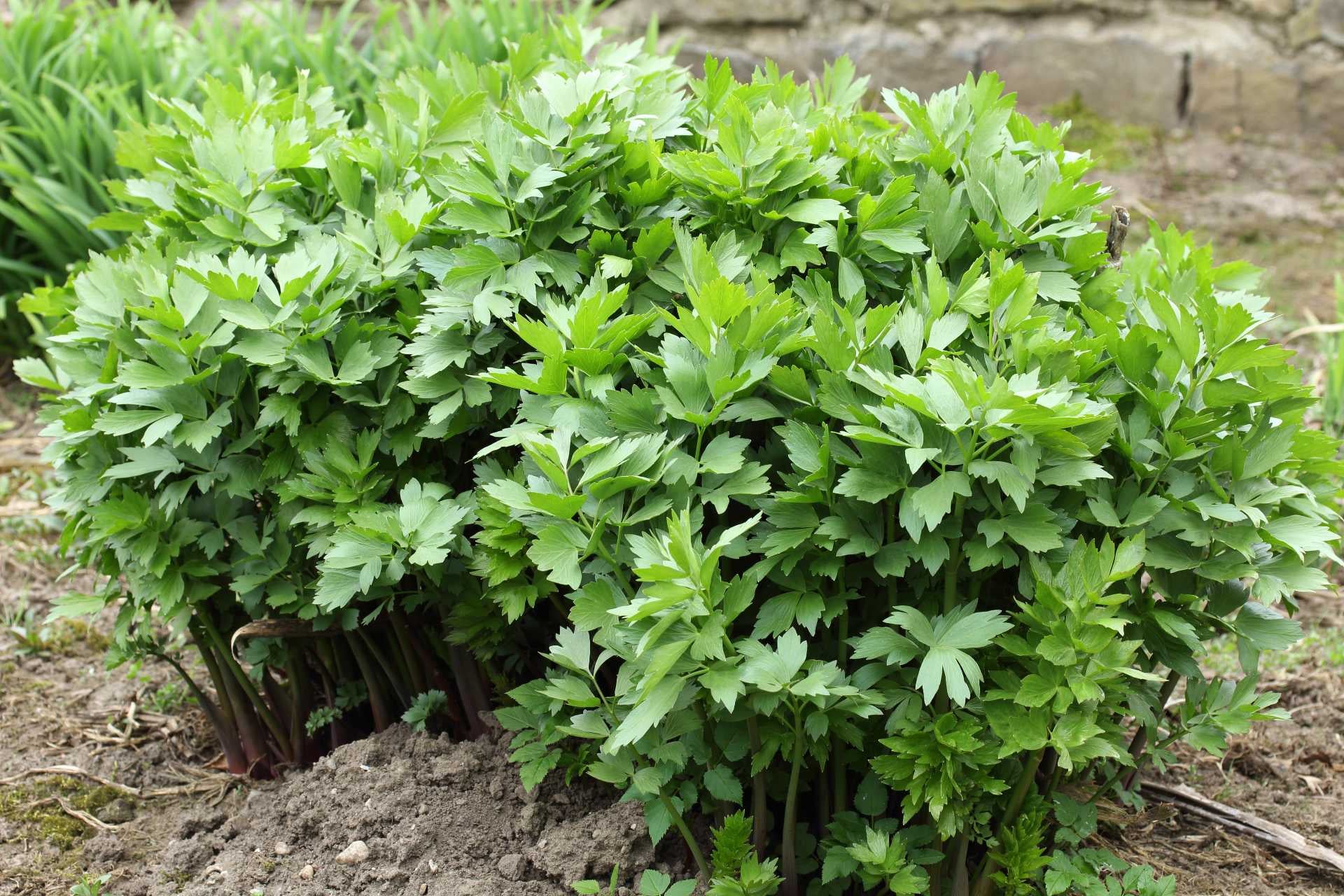Lovage is a great addition to any vegetable garden. As well as those tasty leaves, the roots can be eaten as a root vegetable, and the seeds are also edible, with a flavour that has been compared to fennel seeds. This useful plant also grows clusters of attractive yellow flowers in late spring, which attract beneficial insects to your garden.
The best time to plant lovage is after any chance of frost has passed. If you’re growing from seeds, start them off inside around 10-12 weeks beforehand, and they should be ready by the time the weather is warm enough. Lovage prefers rich, loamy soil, so dig in plenty of compost to improve the soil before planting. A nice sunny spot is best, but lovage will also tolerate partial shade. Plant two feet apart, with two feet between rows, and water the plants in well. Return to water the plants every day until they are well established.
Benefits and nutritional values
Lovage has been used as a part of various folk remedies for centuries, and is often used to treat kidney problems, indigestion, coughing and respiratory conditions, among others. As yet, however, there is no scientific evidence that lovage is effective at treating any of these conditions, although there is some research to suggest that it may have antibacterial properties. Pregnant women are advised to avoid lovage, as there are some reports that it may cause the uterus to contract or bring on menstruation, increasing the risk of miscarriage.
Recipes
If you’d like to try the aromatic flavour of lovage for yourself, these simple, flavourful recipes are a great place to start.













